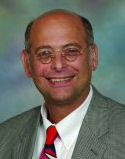Hospital medicine in Portugal
Our editorial advisor reports from the 16th National Portuguese Congress of Internal Medicine.
I recently had the pleasure of participating in the 16th National Portuguese Congress of Internal Medicine, where I joined speakers from many nations—including the United Kingdom, Switzerland and Spain—in exploring the similarities and differences in health care in our countries.
The conference was held in the beautiful beach resort of Vilamoura on the Mediterranean coast. Lovely, shell-strewn beaches and rust-colored seaside cliffs set the stage for general internists from around the country to gather and discuss clinical, political and administrative issues. I learned quite a bit about how internal medicine works in Portugal.

There are approximately 1,800 internists for 10 million people in Portugal, which has universal health care. To become an internist, a physician must be selected in a match after finishing six years at one of the country's seven medical schools. First the Portuguese student ranks her career choices, such as ophthalmology and internal medicine. Then she is assigned to both a residency in a discipline and a specific facility, based on several factors such as standardized test scores. There are a fixed number of slots for each discipline.
As in the U.S., internal medicine attracts low levels of interest. Unlike in the U.S., however, internal medicine is a five-year residency. Specialists in fields like cardiology do not complete an internal medicine residency first; they complete a five-year cardiology residency instead.
There are also significant work-hour restrictions. Residents can work 42 hours a week for a relatively low salary, then are allowed to “moonlight” at night for an additional eight hours a week, which pays better.
After post-graduate training, internists generally work in a hospital-based environment with a smaller outpatient practice. Salary differentials between specialists are much less pronounced. All physicians receive a monthly salary from the government, in addition to any private patients they care for. The scope of care runs from the emergency department to the intensive care unit.
There are no emergency medicine specialties in Portugal. Nurses screen the patients using the Manchester Triage System (MTS), which has been implemented in several European countries. This system, developed in Manchester, England in 1994, comprises 52 flowcharts. Each flowchart represents a specific complaint that can be subdivided into five categories: illness, lesion, children, abnormal behavior and major incidents. The flowchart gives discriminators to help assess the acuity of a patient's problem, by color: red (see immediately), orange (you can wait 10 minutes), yellow (you can wait 60 minutes), green (you can wait two hours) and blue (you can wait four hours).
According to Dr. Antonio Martins Baptista, president of the Portugese Society of Internal Medicine, a significant threat to general internal medicine in Portugal is a movement toward creating an emergency medicine specialization, which would affect practice in the hospital. A gerontology specialization is also being considered, which would affect the scope of practice for general internists, as well.
Quality is an important issue in Portugal, as it is in the U.S. Aside from standard concerns such as deep vein thrombosis prevention, there is concern about the fragmentation of care, especially for patients with chronic illness. Luis Campos, head of the national quality committee in Portugal, spoke of a disconnect between inpatient and outpatient care. While more than 50% of the national medicine budget is spent on patients with chronic illness, there is no motivation for or unified approach to care coordination. Along these lines, there is an inconsistency in medical decision-making and a perceived inadequacy in the implementation of evidence-based therapies.
Waste and duplication of care are additional concerns. At the moment, the average length of stay runs in the seven-day range, with a lack of nursing homes leading to prolonged hospitalizations.
Recently, the country's 73 hospitals were regrouped into 40 care facilities. Physicians expressed concern that this government-mandated change, made for economies of scale, may lead to unexpected negative consequences. There are no metrics in place to evaluate the changes; indeed, there are no standardized national quality metrics at all.
While the practice of the general internist in Portugal is similar to that of internists in the U.S., there are many differences, too—from the concept of shift work, to a difference in the number of safety and quality improvement projects. As at many international meetings, there was much for us to learn from each other.


